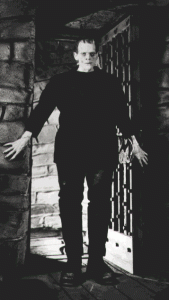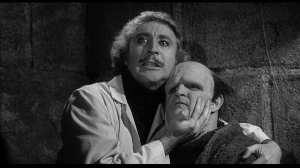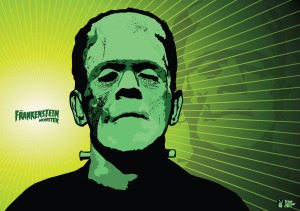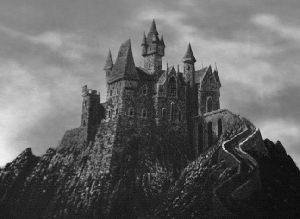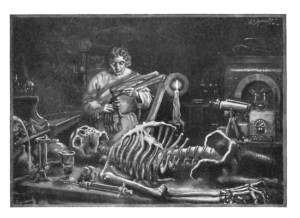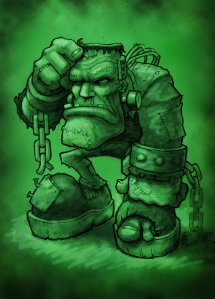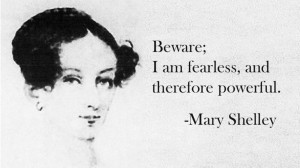Annotated Bibliography: Frankenstein Blog Research
Adams, Carol J. “Frankenstein’s Vegetarian Monster”” Adams, “Frankenstein’s Vegetarian Monster” New York Continuum, 1990. Web. 12 Oct. 2014.
In this comparison, Carol J. Adams takes the story of Frankenstein, and that of The Creature’s Vegetarianism. When Frankenstein came around as a vegetarian it brought up some thoughts on why and how that exactly was seen at the time. The author of the article brings up how just the idea of being a vegetarian was motive enough for people to be shunned and pushed out of the community, as a monster would be. This opened up that many more layers of Kathos for when her story was released.
Bachelorandmaster.com. “Central Themes in Frankenstein.” Central Themes in Frankenstein. Bachelorandmaster.com, n.d. Web. 12 Oct. 2014. The central themes that are talked about in this article give a second (Or third if you count mine) Interpretation of the themes presented in Mary Shelly’s Frankenstein. The idea of parental responsibility and weeping what you sow really strikes home in this article, the idea that the scientist was truly at fault for all that was done and his natural response being that of revenge speaks to the nature of man, and I really find truth in that. The last idea speaking of an ‘Unjust Society’ and how it was not only present in the book, but was a major factor in Mary’s everyday life, in 18th century France.
Baldick, Chris. “The Monster Speaks”” Baldick, “The Monster Speaks” Oxford: Clarendon Press, 1987. Web. 12 Oct. 2014
This collection of criticism was perfect for finding a mass of short and quick responses from a collection of famous writers of the time. It really gives a great summary of what everyone really thought of Mary Shelley’s Frankenstein. The list of authors that were included in the article included Mary herself, ‘my hideous progeny’ she called it. For her to call it that horrid part of herself, the need for her to kind of explain to everyone that she isn’t really as dark as she might seem from her writing.
Botting, Fred. “Frankenstein and the Language of Monstrosity”” Botting, “Frankenstein and the Language of Monstrosity”University of Pennsylvania, 1991. Web. 12 Oct. 2014.
In this passage the author, Fred Botting discusses the idea of a monster through the eyes of seventeenth century France. He discusses the writings of a man that goes by the name of Edmund Burke and how he would measure what is a monster, and how. He did this through a couple of criteria that he came up with himself. This really lead the way of how Mary Shelley herself would describe her monster, and how it was a statement that would have meaning for years and years to come.
Carol J. Adams. “The Sexual Politics of Meat: A Feminist-Vegetarian Critical Theory.”
New York, Continuum, 1990. P. 108-119. This small exert of this book showed the views of the author toward Frankenstein in a new way I had not seen before. Carol J. Adams believed that the story had a very large theme surrounding the vegetarian state of mind that the monster had, the moral implications of it, and the further alienation of the monster because of this state of mind.
Cottom, Daniel. “Frankenstein and the Monster of Representation”” Cottom, “Frankenstein and the Monster of Representation” Substance, 1980. Web. 10 Oct. 2014.
In this article I wanted to continue to research Mary Shelley and a more in depth meaning to what she might have meant by called her Story of Frankenstein her, ‘Hideous progeny’. His ideals come from that of a complete different sense, but are appreciated. He expresses his thoughts about the similarities that the scientist, Frankenstein had toward his monster. It was his hideous progeny in really every sense. He goes more in depth with his ideas and follows it up with so many examples and analogies that it’s hard to disagree with them.
European Graduates. “Mary Shelley – Biography.” Mary Shelley. Egs.Edu, n.d. Web. 12 Oct 2014 This Biography gave the basic gist of Mary Shelley’s history. It gave the basic information needed to formulate exactly why she may have wrote something as gothic and in depth as this. Her life story contains that of discrimination after the death of her mother, and the remarrying of her father, the suicides, and the loss of her first child. It would make anyone down. Sad part about all of that is that she wrote Frankenstein much before most of the terrible things that were to come to Mary’s life. To add to the impressiveness of her writing ability it’s amazing to note her lack of any kind of formal education.
Fitzpatrick, Sean. “Frankenstein by Mary Shelley – Crisis Magazine.” Crisis Magazine. The Civilized Reader, 20 May 2013. Web. 12 Oct. 2014. I began a search for a more recent critically analytical dissection of the story, as to see what the changes might have been when time is present. As much to my surprise time seemed to not only not change the common ideals and view on Frankenstein’s meaning, but make it more concrete. The occurred change was that only of the comparisons made by the critic. They would use more recent examples of similar works, but the overall idea was the same on this, as the author would put it, “gothic attempt at rebellion”.
“Mary Wollstonecraft Shelley.” Bio. A&E Television Networks, 2014. Web. 12 Oct. 2014.
In this biography I found some of the basic information and may even the motivation for Mary in writing Frankenstein. The author of this biography (Who is not given) told of Mary’s lack of education in a formal sense, but her extensive amount of knowledge all self-taught from her father’s library. Which would translate into her hobby of writing, as you could easily imagine was something she did a lot. Last bit of information I grabbed from this article was the loss of her first child. This tragedy is believed to have been when she began her writing of her famous story, Frankenstein.
Pearce, Joseph. “The Misunderstood Monster | From the Introduction to Mary Shelley’ “Frankenstein” | Ignatius Insight.” The Misunderstood Monster| From the Introduction to Mary Shelley’s “Frankenstein” | Ignatius Insight. Ignatius Critical Editions, 2008. Web. 12 Oct. 2014. Here is where I found a bit of information on why exacting the writing style of Frankenstein may have been as confusing as it was. The Author Joseph Pearce called these “Forces” things like the time period it was written in, the teenage years the author wrote the story in, and lastly the emotionally deteriorating effects that came with the suicides and miscarriages she grew up with.
Shmoop Editorial Team. “Mary Shelley: Biography.” Shmoop.com. Shmoop University, Inc., 11 Nov. 2008. Web. 12 Oct. 2014. I went and searched for a second Biography just to check and insure the info from the previous was correct, while also looking for more little bits of information that I could include in my blog to give Mary’s background more examples and personality. A bit of information I would find included that of the frequent guests that Mary had at her house as a child. They would include many famous writers that would continue to shape her future in writing.
University of Pennsylvania. “Major Themes in Frankenstein.” Major Themes in Frankenstein. University of Pennsylvania, n.d. Web. 12 Oct. 2014. I used this website to try and create an understanding for all the themes present in the story. Though they are plentiful given the depth this story has, it really assisted me in giving more of an in-depth understanding for where they were present. While also reminding you of what it is exactly that those themes are supposed to do to a reader, what it is supposed to make them feel when they come across them. Giving the example of alienation and how Frankenstein’s monster was nothing but alienated throughout the course of the story. Frankenstein’s monster was created as a monster with no real way to belong.

